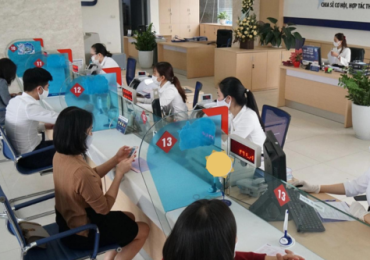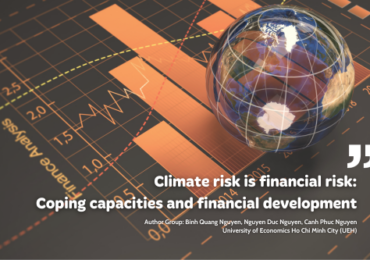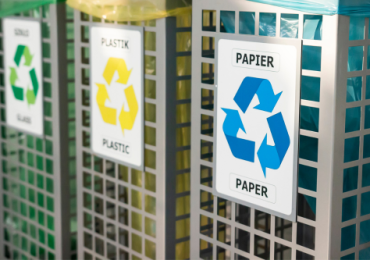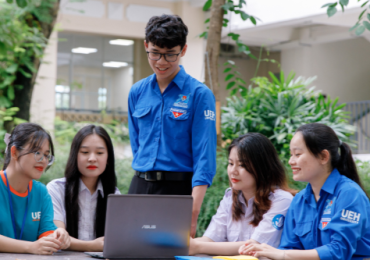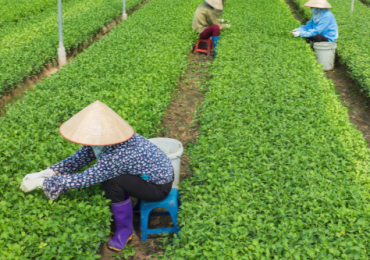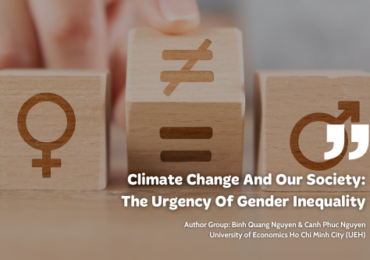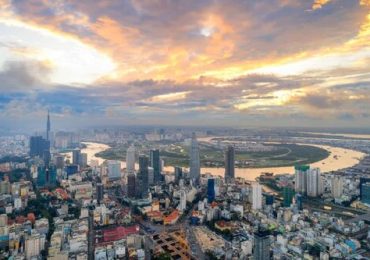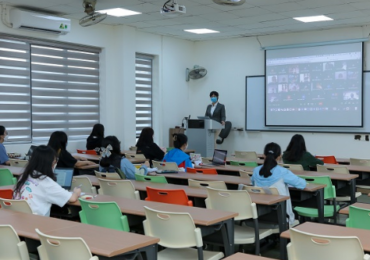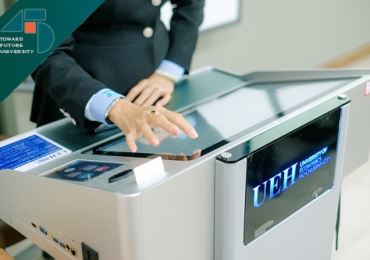Building a Chain of Production – Consumption of Agricultural Products and Foods towards ensuring Food Safety between HCMC and the Provinces of the Southern Key Economic Region (Part 1)
5 October, 2023
Ho Chi Minh City and large urban areas in the Southern Key Economic Region are the main agricultural and food consumption markets of Southern Provinces/Cities and especially the Provinces/Cities in the Southern Key Economic Region. Therefore, the intra-regional linkage between Provinces and Cities in the production and consumption of agricultural and food products to ensure food safety is extremely necessary to protect the health of tens of millions of future residents and in the world. From the current situation of organizing food production that meets safety standards as well as the difficult and outstanding problems in the locality, the author group has conducted research and analysis to propose management policies and solutions to increase supply and market-stabilization supply in the Provinces and Cities of the Southern Key Economic Zone.
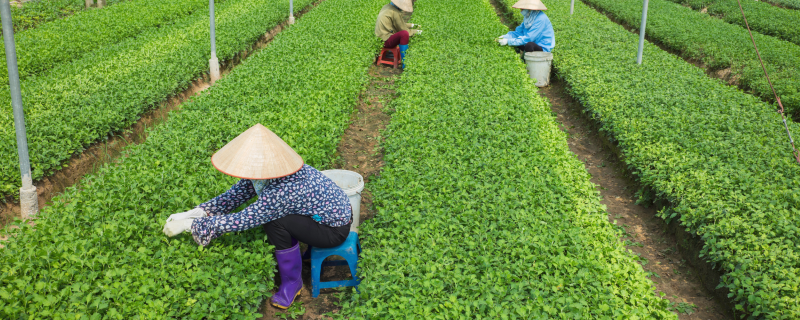
Part 1 of this article is to introduce the current status of food production organizations that meet safety standards.
The geographical features in Ho Chi Minh City
For many years, Ho Chi Minh City has been the largest urban area in the country, contributing greatly to GDP and the national budget with more than 14 million residents, has tried to build a retail system and a system of food-supply wholesaler businesses, wholesale markets, building agricultural and food supply chains and so on to develop a commercial system to meet people’s consumption needs and to improve food safety management. The role of modern distribution systems and wholesale markets is indispensable in terms of the connection between producing-supply and consumption locations. In Ho Chi Minh City and other Provinces, modern distribution systems are developing strongly and partly ensure food safety regulations. On the other hand, more than 70% of agricultural products distributed through traditional commercial channels, which are people’ markets, have not been strictly controlled in terms of food safety.
Ho Chi Minh City and large urban areas in the Region are the main agricultural and food consumption markets of Southern Provinces/Cities, especially the Provinces/Cities in the Southern Key Economic Region. Therefore, the intra-regional linkages among Provinces and Cities in the Southern Key Economic Region regarding the production and the consumption of agricultural and food products that ensure food safety are extremely urgent to protect the health of tens of millions of future residents and generations. Currently, the connection at the regional level concerning the supply and the trade of safe food is facing many difficulties: there has been no specific legal mechanism while management, in accordance with the administrative boundaries, has been a dividing factor interrupting the food supply chain towards safe producing and consumption. Therefore, building the linked models of food production and consumption that meet food safety standards between Ho Chi Minh City, the consumer market and other Provinces and Cities of the Southern Key Economic Region as one production and processing location as well as finding a regional linkage mechanism to resolve the link between production and consumption meeting food safety standards between Ho Chi Minh City as one large urban and agricultural production area in the Southern Key Economic Region is totally crucial.
The situation regarding organizing food production meeting safety standards and issues in the Southern Key Economic Region
* Guidelines and Policies from local Government and food safety management activities being implemented in localities in the Region
Currently, Ho Chi Minh City is piloting an integrated food safety management model with the focal point being the City Food Safety Management Board. On the other hand, other Cities have been organizing food safety management in accordance with one distributed model among provincial management agencies of the three sectors of agriculture, health and industry and trade, in which health sector is the focal point. The governments of Provinces and Cities in the Southern Key Economic Region are very interested in organizing production and food safety management regarding local agricultural and food products.
State management agencies on agriculture and food safety in Provinces and Cities, currently, are mainly applying production management in accordance with biosafety production standards for crop and livestock products because of the legal mandatory requirements together with the supportive policies depending on local resources. Meanwhile, production in accordance with VietGAP standards is not mandatory and only depends on the requirements of the consumer market channel. The Provinces often support the implementation of livestock and crop projects in accordance with safety standards as well as issue certificates to households and farms that comply with those standards. Most Provinces encourage farmers to join Cooperative Units to manage safe food production and to receive collective support as well as only provide funding for implementation and initial VietGAP certification to beneficiary units, mainly agricultural Cooperatives.
Currently, producers can choose either to produce in accordance with biosafety production standards or VietGAP standards or produce without any regulations or standards because it is not completely demanding. Therefore, the majority of households and small production facilities often do not meet the regulations or the standards and distribute products through traditional channels while large-scale farms and agricultural enterprises apply these standards in accordance with the requirements of modern distribution channels.
Managing agricultural materials in the provinces is a difficult problem. The Province does not have the authority to license the production and circulation of agricultural chemicals but must manage the business and the distribution. Moreover, pesticide labeling concerning many different pests and crops causes difficulties for specialized management agencies upon checking the chemical use by producers. In addition, the fact that the authority of specialized inspectors is limited causes certain difficulties towards organizing interdisciplinary inspections.
Tracing the origin of meat products in wholesale markets cannot ensure food safety yet as it can only be traced from collectors to slaughters besides the distribution to wholesale markets. In particular, product traceability is much more difficult as pre-slaughter livestock products come from unidentified different Provinces and Cities. This origin traceability situation is similar to that of other meat, livestock, poultry products and vegetables.
Certifying related to origin, brands, collective and individual labels as well as providing application solutions for product traceability, barcodes and QR codes for products that meet standards in accordance with manufacturers’ requirements is being carried out locally but has not been applied widely yet.
Provinces and Cities in the Southern Key Economic Region are not closely linked with each other upon developing production plans as well as the information regarding the market and the market demand to meet the balance of supply and demand. In addition, the fact that the market information system for markets with large consumption demand for agricultural and food products like Ho Chi Minh City has not been built yet makes the production plan development in terms of the localities in the Region unable to connect with the market in a proactive way.
The difficulty in coordinating food safety management between consuming localities and producing localities is another barrier towards consuming agricultural products. First, the food safety management systems between production and consumption localities are not unified. Differences in management procedures listed as the production locality certifying standards; nevertheless, the consuming locality does not recognize this factor, what is more, other additional management barriers disrupt the distribution channel or create additional barriers to entry.
*Producers, farmer households, producing facilities, Cooperatives and agricultural enterprises
All Provinces have the tendency to evaluate that the majority of farmers have enough knowledge to implement VietGAP, that they are well-aware of safe food production, and are willing to apply; on the other hand, they have not applied for various reasons. Other surveys on other producing households also identified similar results.
In terms of production, recording the production process and agricultural material classifications in production logs and forms in accordance with VietGAP is complicated for farmers while production follows biosafety standards. This recording is not required. Application cost is also a financial barrier despite not being a big sum; actually, it is a big issue for small farmers.
In terms of consumption, VietGAP products cannot be distinguished from those products produced in accordance with the normal processes on the traditional market. VietGAP products do not have different prices to compensate for material costs and management costs incurred during implementation, causing financial losses for producers. In modern distribution channels, supermarkets only purchase a portion of VietGAP products (approximately 20%). The remaining farmers have to consume through normal commercial channels and do not differentiate products in terms of type and price. Producers have difficulty selling products that do not enter modern distribution channels, receive risks and financial losses; therefore, they do not plan to apply VietGAP. On the other hand, the dependence of small farmers on financial supplies from the trader system is one more barrier regarding applying food safety regulations and standards. In this case, the trader system plays a decisive role in the success or the failure of applying food safety regulations and standards. Only when retail channels are required to apply food safety standards towards products can the trader system change their behavior. In some localities, the relationships with vegetable farmers are currently being formed in the form of outsourcing to traders, similar to that in the broiler chicken raising industry. Therefore, farmers do not pay attention to safe production; actually, they depend entirely on the farming methods and agricultural chemicals that traders provide and request them to apply.
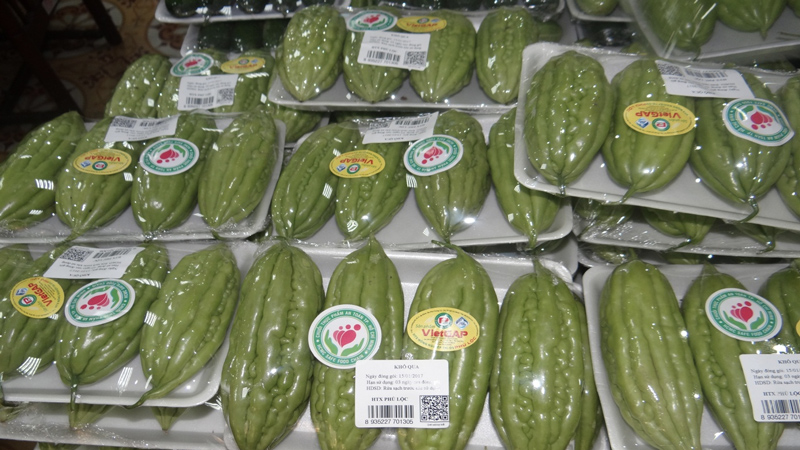
VietGAP products do not have different prices to compensate for material costs and management costs incurred during implementation, causing financial losses for producers. Collected photos
What is more, producers’ psychological barriers, mainly agricultural households, limit the expansion of farming scale in accordance with VietGAP standards. Farmers often pay more attention to short-term benefits rather than long-term and sustainable benefits. In terms of cooperatives, participating members, nevertheless, have not recognized the actual benefits that cooperative production brings.
*Difficulties in terms of the production organization system
As the farmers’ production scale is small and fragmented, the cost of applying VietGAP standards (training, application, certification, re-certification) for individuals and households is relatively high and limits the number of those applying these standards. This leads to the consequence that producers are not eligible enough to apply traceability in accordance with food safety standards. In terms of livestock and poultry farming, applying biosafety farming standards and VietGAP standards is more effective upon producing on a large scale. Farms or agricultural businesses possess capital and market advantages for qualified investments. However, households raising livestock and poultry on a small scale, especially those raising semi-concentrated chickens listed as backyard chickens and free-range ducks, often do not have enough capital and market conditions to invest successfully in accordance with the required standards.
*Difficulties regarding safe consumption of agricultural products
Recent studies on the consumer party identify one clear differentiation. A segment of high-income consumers desires and absolutely pay attention to safe consumption of agricultural products. Meanwhile, the majority of consumers with average and low incomes have the desire but have to buy agricultural products in the traditional distribution system of retail markets. The modern distribution system has limited consumption capacity related to agricultural and food products because the traditional market system are existing in parallel; consequently, this distribution can meet approximately 20% of the actual demand. Therefore, the modern distribution system cannot purchase 100% of the output of production units that meet VietGAP standards. Manufacturers are forced to sell outstanding VietGAP products into traditional distribution channels regardless of product and price. This leads to the fact that manufacturers gradually abandon or reduce farming areas in accordance with VietGAP.
Local government support for households or Cooperatives in increasing VietGAP area contributes to enhancing competitive pressure towards bringing goods into the modern distribution system, increasing opportunities for new entrants while reducing the opportunity of those who have sold goods to the distribution system. On the other hand, the sunk costs of cooperatives or producers in general upon their desire in distributing goods into modern distribution channels is another important financial barrier. For most producers, the purchasing price of VietGAP and GlobalGAP products and the cost of implementing management to ensure product traceability in modern distribution channels are not reasonable compared to their production costs. Meanwhile, traditional consumption channels, in terms of price, do not differentiate between VietGAP products and regular products. In addition, farmers and producers, in general, have not accepted the method of purchasing and paying for some modern consumption channels, listed as buying in advance, paying later in accordance with the quality of agricultural products and paying via bank account. These purchasing and payment methods are not consistent with farmers’ wishes.
Simple consumption habits and lack of attention towards food safety are also one more difficulty regarding safe product consumption. The habit of consuming ‘hot meat’ of Vietnamese consumers has resulted in the meat supply chain that is not equipped with the cold storage system to preserve meat, causing difficulties for the meat value chain once being stored to control food safety and to regulate prices.
Author: Assoc. Dr. Trần Tiến Khai – University of Economics Ho Chi Minh City (UEH).
This is an article in the series of articles spreading research and applied knowledge from UEH with the “Research Contribution For All – Nghiên Cứu Vì Cộng Đồng” message, UEH cordially invites dear readers to look forward to the upcoming Knowledge Newsletter ECONOMY No. #86.

News & photos: Author, UEH Department of Marketing & Communication

